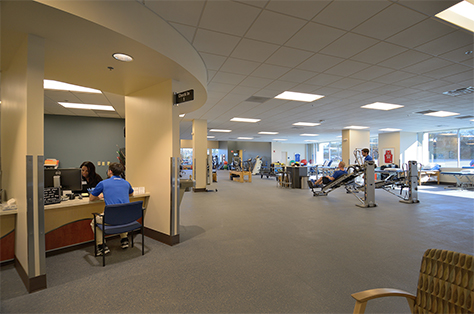As we’ve previously talked about, one of the most frequent, significant, and expensive problems that our society encounters when it comes to healthcare is the lack of appropriate access to physical therapy. This lack of availability exists for a number of reasons, but one of the leading causes is that patients are not able to attend a second session after their first, and when they do not continue their routine, they don’t see results. Physical therapy is necessary to regain quality of life after many serious injuries and illnesses, and when patients cannot keep up with their appointments, it can cause severe negative impact on their lives. The other problem with this is that patients might be given exercises and home-therapies to try after their first visit, but without continuing their sessions, they either don’t do the exercises correctly or stop doing them at all.

Now, we have a thing called telerehabilitation, which combines telecommunication, sensing, display, and computing technologies to enable rehabilitation practices and physical therapy sessions to be conducted from a distance, with no need for patient travel. This reduces the cost, which can be a factor for many people, while retaining the benefits of recovery and reduced likelihood of injury and discomfort from performing at-home exercises incorrectly. A system has been developed in order to make this system work, and several researchers from across multiple disciplines at the University of Tasmania in Launceston, Australia have all left their fingerprints upon it. They system is called “Ghostman,” a first-person viewing system through which users can observe their own movement overlaid upon a “ghost” image of the instructor’s body in real time.

Ghostman is an AR app, maintaining the perception of the patient’s real-world environment and allowing both patient and physical therapist to inhabit the other’s viewpoint. Researchers call this technique “inhabiting visual augmentation”. ‘Ghostman’ does this using a head mounted display (HMD), which permits the patient to mimic the movements of the therapist without detailed instruction, instead simply observing the instructor’s movements through the AR images. The system is basically a stereoscopic HMD connected to a desktop computer, which processes and renders the video, and requires internet access. ‘Ghostman’ consists of basically two subsystems: one of which is operated by the patient, and the other by the therapist. The two subsystems communicate via the internet, enabling remote telepresence applications.

Soon.
Researchers hypothesized that even users with no AR training, novices, could use Ghostman to shadow a skilled chopstick performer in real time, and that this would be effective in training the users to operate them. To test this, one group was assigned to use the Ghostman app with no view of the trainer other than the AR dispositive, while the other group would use good old fashioned face-to-face training. After the test, a questionnaire was provided to assess the user perception of the instruction methods. It consisted of simple statements like: ‘the instructions I was given were easy to follow’ or ‘the instructions helped me learn how to use chopsticks,’ among others, and were answered using a 5-point Likert scale, in which 5 points corresponded to strong agreement with the statement, and 1 indicated strong disagreement.

inhabiting visual augmentation
The baseline skill assessment of the 12 participants (six in each group) determined that there was “no significant difference” between the face-to-face group and the Ghostman group at the beginning. After the training, it was determined that the Ghostman group reduced their errors and increased their total skill throughout the study and, based upon the questionnaire, that the users thought that the Ghostman device was just as helpful in learning this new skill as the face-to-face training. It’s incredible to have a virtual teacher who can be just as good as the real thing, and when applied to the field of physical therapy, this system could prove itself an affordable, comfortable, and convenient method for both patient and therapist. We at ARinMED will be looking forward to further developments in the physiotherapy and telemedicine field, since we certainly believe that this is the future of medicine.
What do you think of the system? Would you like chopsticks lessons via AR devices? Tell us your thoughts in the comments section below!







